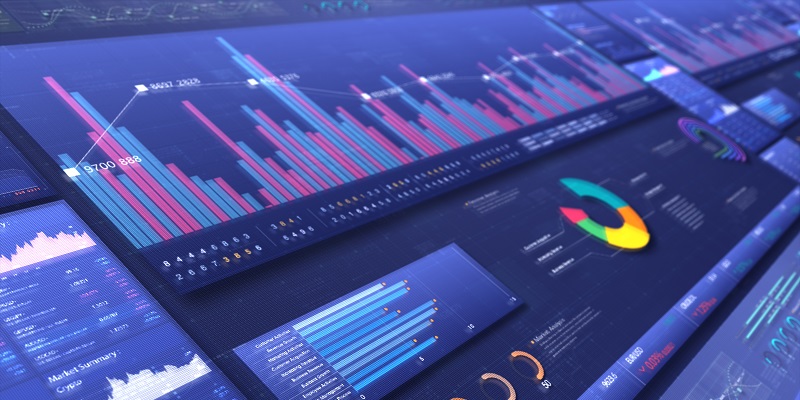As businesses rely on data to drive decisions, Customer Data Platforms (CDPs) have gained importance in the marketing and data analysis ecosystem in recent years. CDPs serve as a central repository for various types of data, including customer interactions, behaviors, and preferences, enabling businesses to build better customer profiles for personalized engagement. In this article, we will explore the evolution of CDPs and their future capabilities, highlighting ways businesses can stay competitive with advancements in technology.
CDPs are cited as the future of marketing technology and are defined as platforms that collect and manage customer data from different sources to build a single, actionable view of each customer. Their importance in business operations is apparent in their ability to streamline data management, uncover insights, and fuel personalized engagement. Staying abreast of CDP advancements is crucial for anyone working in marketing, data analysis, or business ownership who wants to fully unleash the power of their data.
CDPs are evolving beyond their traditional use cases of serving as a marketing tool to attract, engage, and retain customers. They now serve as the backbone of connected data ecosystems that enable effortless integration and management of data across a range of platforms. CDPs enable data-driven engagement across numerous channels like customer service, product development, and sales that go beyond mere marketing. CDPs can now also integrate with various systems, such as CRM tools, eCommerce platforms, and even business intelligence systems.
Activation Becoming Crucial
While integrating and collecting data is crucial for businesses, their importance is incomplete without activation. Activation involves taking an action and engaging the customer based on the collected data. In the past, data collection was more critical than activation in CDPs. However, now activation capabilities are becoming just as crucial. CDPs are now integrating activation capabilities into their platforms for a more holistic approach.
The AI/ML capabilities offered by CDPs are worth paying attention to as they can effectively identify patterns in customer behavior, personalize marketing messages, create sales content, provide human-like customer service, and automate critical business tasks such as advanced analytics. By incorporating automation, CDPs can significantly reduce the time and effort required for data processing, which results in better and faster business decisions.
Composable or Hybrid CDPs
CDPs can contain a plethora of complex data systems that enable businesses to streamline and consolidate their data management. Composable or Hybrid CDPs focus on leveraging an organization’s centralized cloud data warehouse and then building segmentation, enrichment, and streamlined activation on top. With CDPs, marketing teams don’t have to manage data; they can instead rely on the platform’s advanced features to refine and segment it.
Privacy-First Approach
Given the growing importance of data privacy regulations like California’s CCPA and Europe’s GDPR, safeguarding customer data is a top priority for businesses. CDPs are taking a privacy-first approach and implementing features like data governance and consent management to address this. Consent management ensures that a customer permits the use of their data, and data governance makes data usable for consumption without violating any existing regulations.
Building a Clear Strategy
Start with a clear strategy. Even the best CDP in the world is useless without a coherent plan. Building a robust strategy that aligns with business goals and objectives is vital to prevent wasting time and resources. A strong plan should include objectives, data sources, data types, target audience, and the goals they intend to achieve. Developing such a plan before purchasing or developing a CDP will ensure that the organization does not buy anything they will not use.
Choosing the Right Vendor
There are numerous vendors and software options available for businesses looking to implement a CDP. Therefore, the focus should be on the capabilities that are lacking in the current ecosystem that the CDP will fill. By understanding what is required of the new CDP, businesses can choose the best vendor for their needs. Comparing vendors on a cost basis alone is unwise, as the best vendor isn’t always the lowest-priced one.
Leveraging AI and ML
Artificial intelligence and machine learning provide businesses with tools to enable personalized and scalable marketing, automate tasks, and gain deeper insights into customer behavior. CDPs provide businesses with the necessary infrastructure to develop and implement AI/ML strategies using customer data in real-time.
CDPs Adapting to Stay Relevant
As the digital landscape continues to evolve, CDPs must adapt to remain relevant. They are now offering more advanced features such as AI/ML capabilities, composable architecture, and a privacy-first approach to data management. CDPs are experiencing tremendous improvements and advancements.
In conclusion, CDPs are evolving from their traditional use case to become a critical backbone of connected data ecosystems. Companies need to adopt a data-driven approach to remain competitive, and they can leverage CDPs for that purpose. Staying up-to-date with the advancements of CDP technology is essential because it helps businesses understand how to tap into the potential of data management more effectively. Incorporating CDPs into business operations and strategies enables the realization of better customer profiles, automated marketing, and personalized engagement that fosters customer loyalty.

